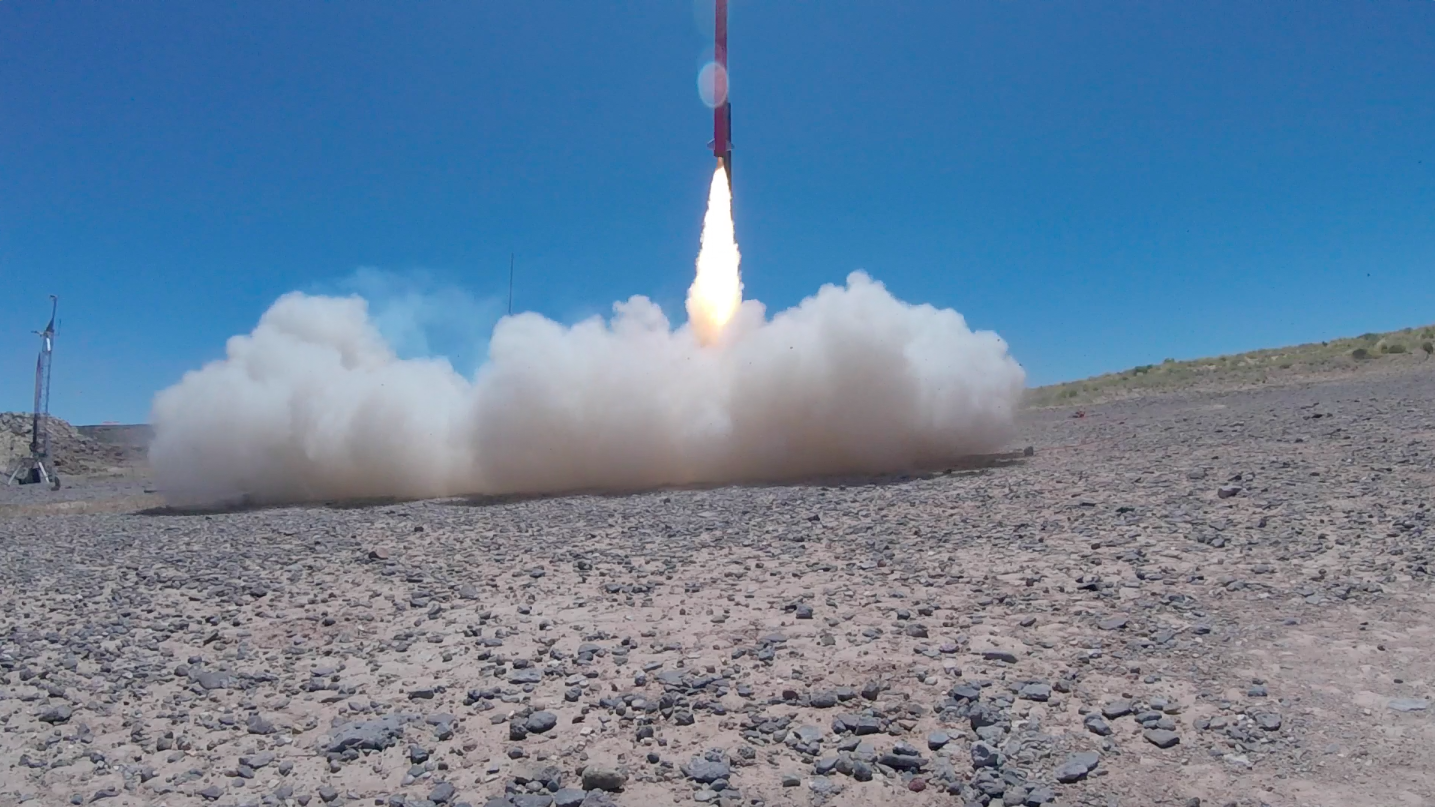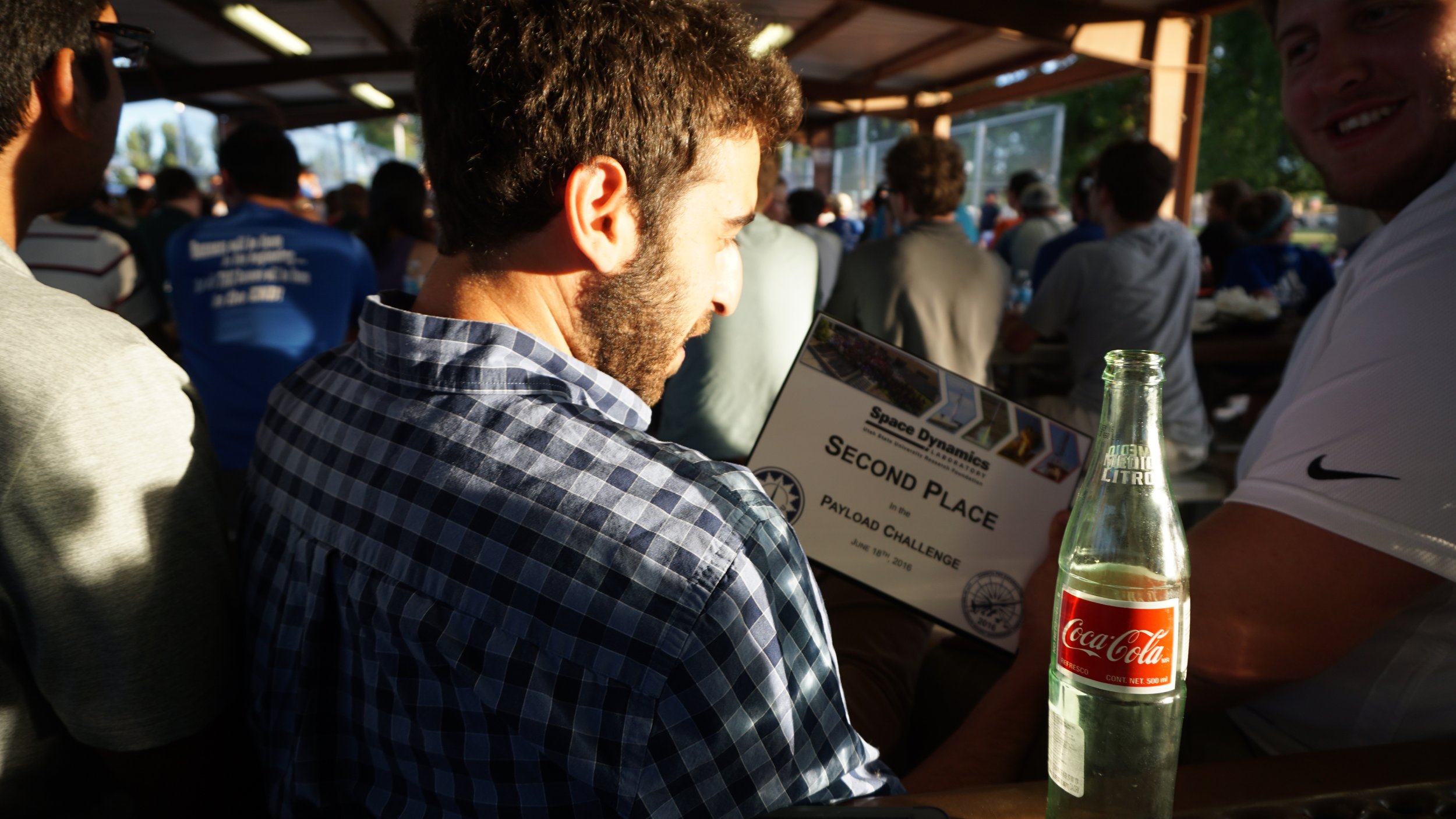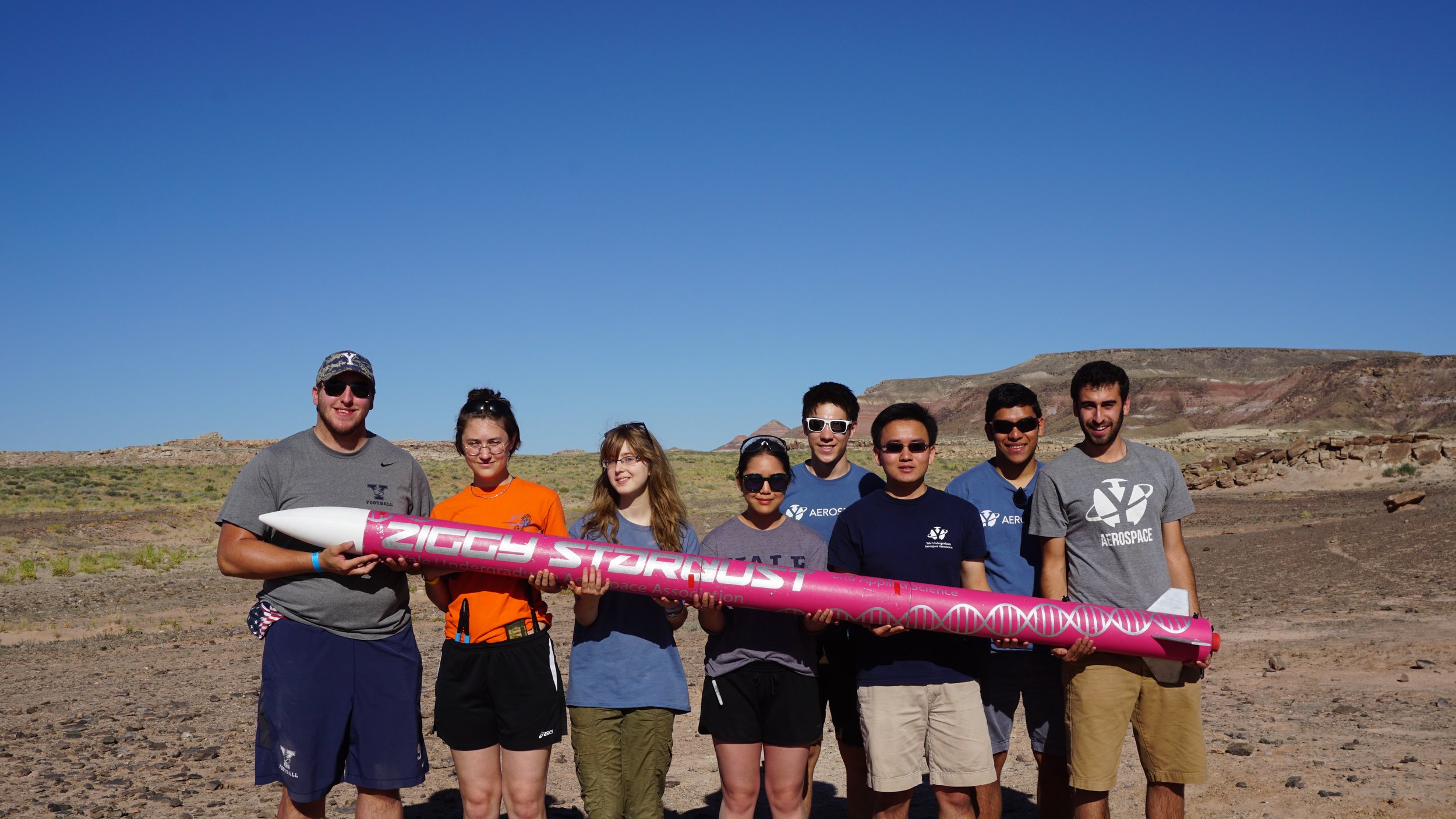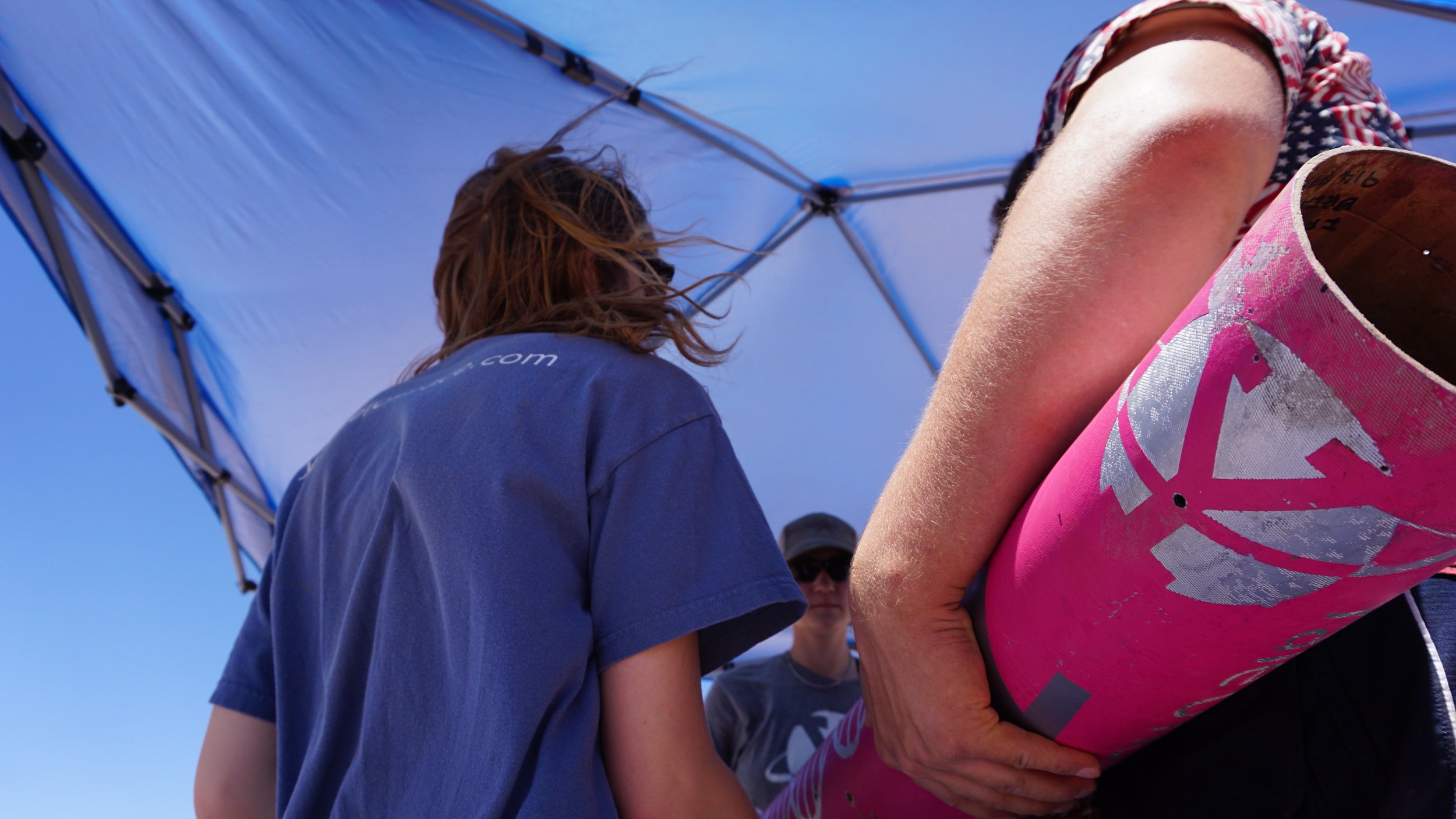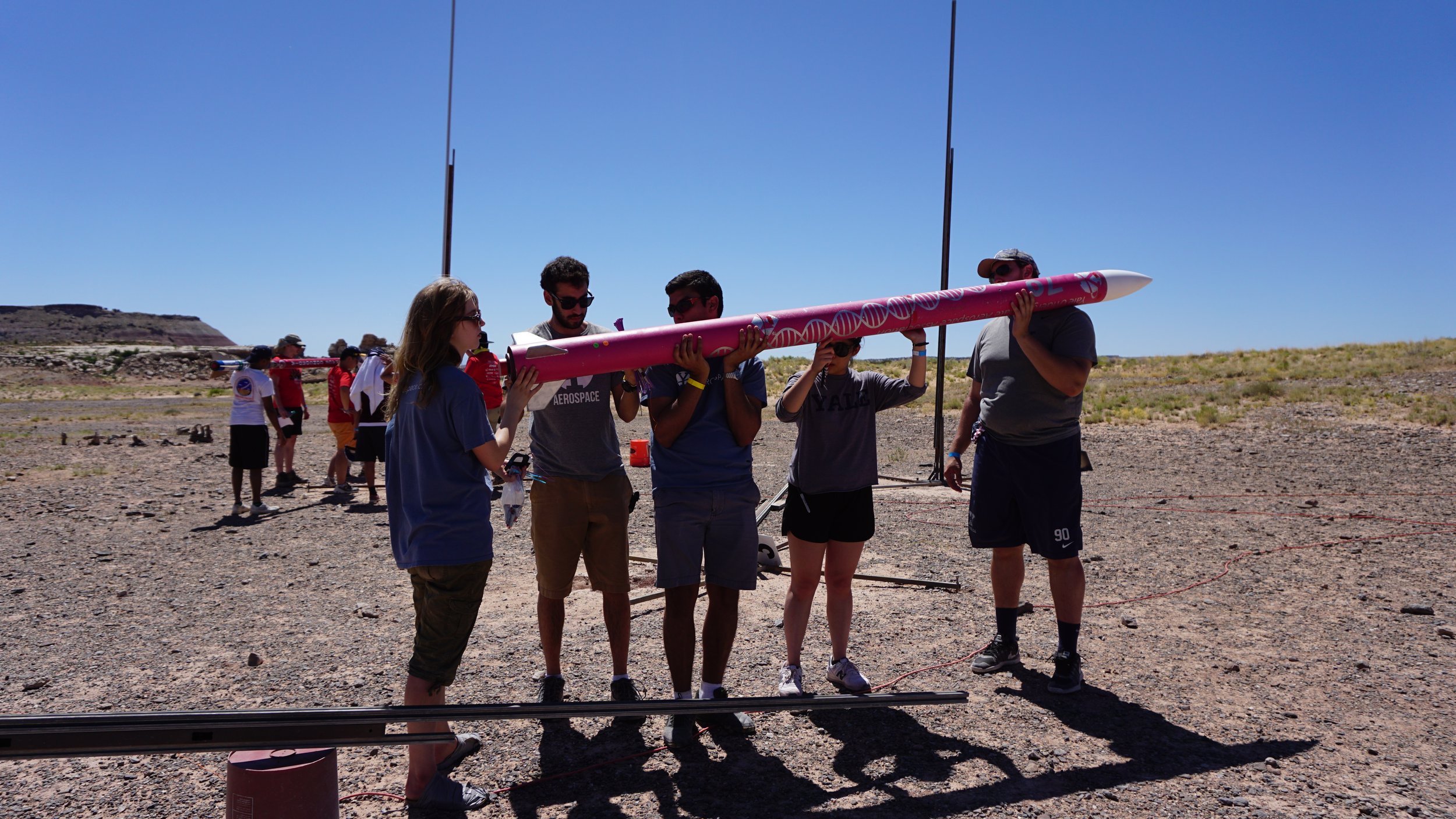IREC 2016
Representing the YUAA’s return to IREC, the team managed to create a Sky Metagenomics payload to test the biodiversity of the earth’s atmosphere, earning the team a coveted 2nd Place in the SDL Payload Challenge (out of more than 50 international teams). The program represented the YUAA’s first foray into Biology and Genetics, culminating with an incredible win to celebrate.
Development
The rocket team spent the first few meetings of the semester in helping the new members become familiarized with the fundamentals of rocketry. YUAA held a workshop on basic rocket engineering. Soon after we held the certification launch where the team leader and other members launched a test rocket from a dedicated launch site in order to become certified for the launch of the actual rocket at IREC.
Payload
Throughout the fall semester, the team worked on the preliminary design and began constructing the payload and rocket, affectionately coined “Ziggy Stardust.” By the beginning of the spring semester, they built the basic structure of the rocket which measured 109 inches in length and 5.5 inches in diameter. To design the payload and prepare the protocols for DNA analysis, they enlisted the help and guidance of members of the biology department at Yale. The team spent the first half of the spring semester making modifications and adjustments to refine the design of the rocket and the payload and were ready to test it by April.
The team discussed a high-level overview of the science payload in their multi-page research report on the Sky Metagenomics Rocket Project, linked here:
Recent discoveries have revealed the incredible biodiversity of bacteria found in the atmosphere. Research suggests that these bacteria may play an important role in determining global weather and the climate. Contemporary collection methodologies involve expensive techniques such as flying airplanes that collect samples, or devices like weather balloons that present many frustrating difficulties. Much of current research relies on culturing bacteria to understand the biodiversity of the atmosphere, although less than 1% of environmental bacteria can be cultured. Our team developed a device that can fit in a High Powered Rocket and collect bacteria at target altitudes. We developed a novel protocol for extracting DNA from the collected bacteria. Our team also built all biological equipment used to analyze samples in the absence of a laboratory. Thus, this rocket and payload represent a relatively inexpensive, novel, and straightforward method for conducting atmospheric biological research. The rocket was successfully launched twice. During one launch, DNA was found after successfully going through the isolation and PCR protocol. The second time no DNA was found, but our ability to maintain a sterile environment was confirmed.
Testing
On 9th April 2016, the YUAA Rocket Team travelled to Maryland to test launch Ziggy at the Red Glare launch hosted by the Maryland Delaware Rocket Association (MDRA). Along with over a hundred other groups, our team wished to launch the rocket in order to test the launch, recovery, and payload systems before the Intercollegiate Rocket Engineering Competition in Utah. The launch went off extremely smoothly – the rocket went up straight as an arrow and achieved a maximum altitude of 8,500 feet at apogee, exactly as predicted by simulations. This also marked the highest apogee achieved by any of the single-stage rockets YUAA has ever built! Parachute deployment also went off without a hitch, and the team was able to recover the rocket without any damage to it during the landing.
IREC 2016
Buoyed by their successful launch at Red Glare, the team was ready to compete at the Intercollegiate Rocket Engineering Competition (IREC), held in Green River, Utah, from 14th to 19th June 2016 – the largest university-level rocket competition in the world! After shipping Ziggy and the payload to Utah, the team spent the first couple of days preparing the rocket and payload systems for the launch, presenting their project at the symposium and interacting with teams from all over the world.
Although the first launch attempt was aborted due to inclement weather conditions, Ziggy launched successfully the following day, reaching an apogee of 8,900 feet – slightly less than the expected altitude due to the presence of high wind. Even though the payload tested negative for the presence of DNA, the team managed to demonstrate it worked due to the presence of atmospheric dust in the sampler. And, in a repeat of the feat achieved at IREC two years prior, the rocket team won Second Place in the Payload Category of the competition! It certainly was a very impressive feat, since the competition included over 50 teams from the US, Europe, India, China, and Egypt – a grand culmination of a year’s worth of hard work put in by the members of the team.
